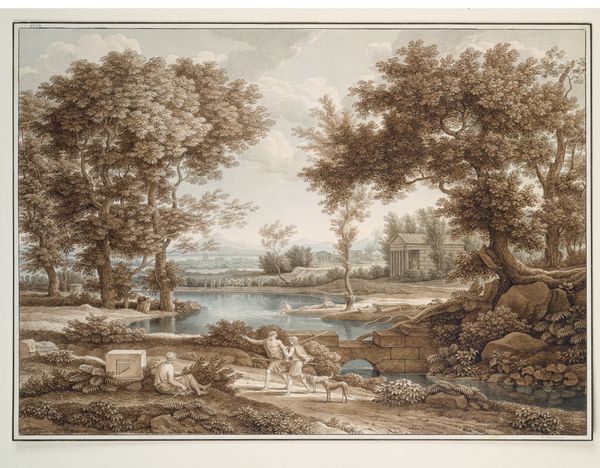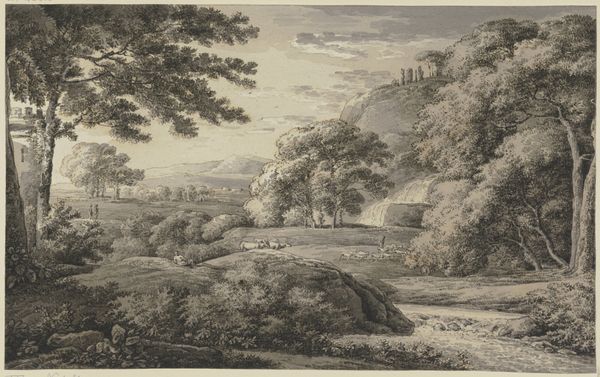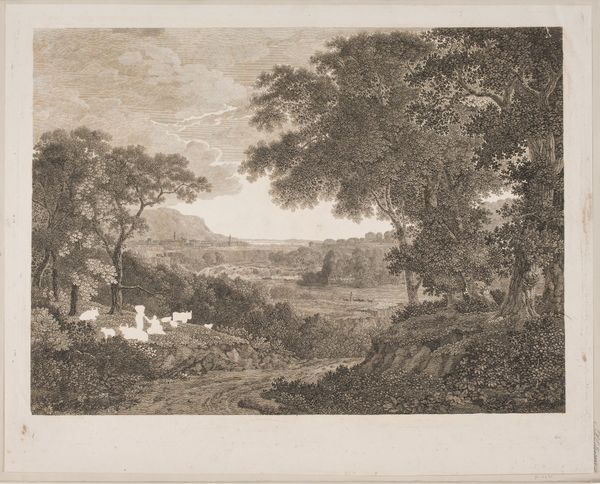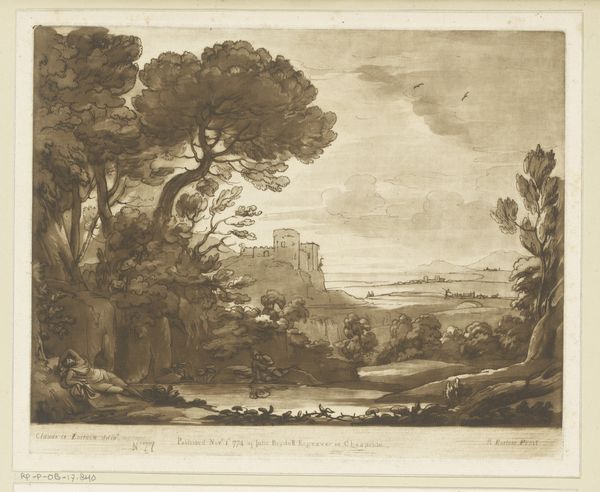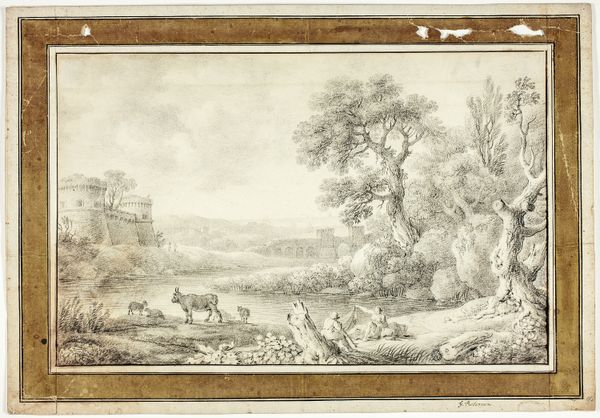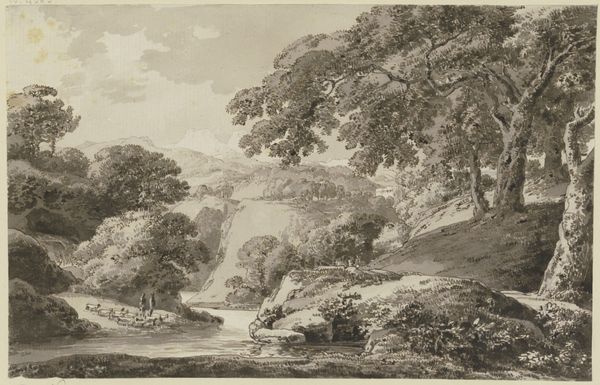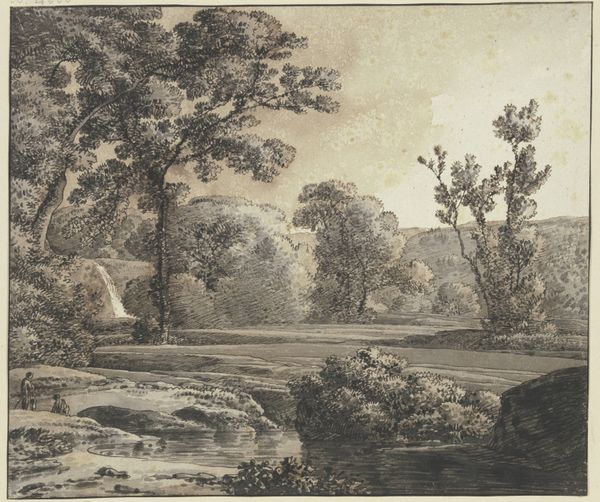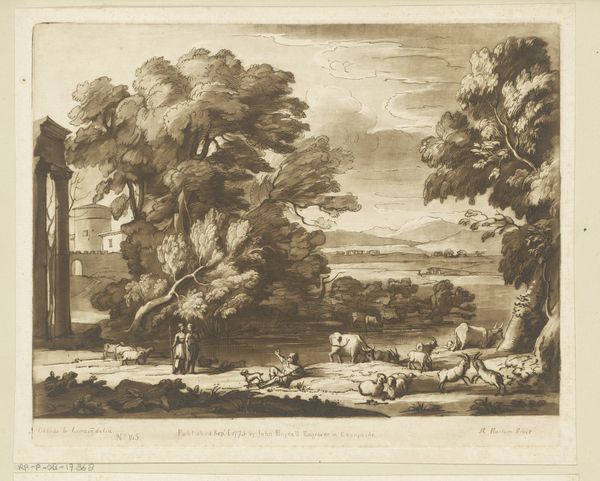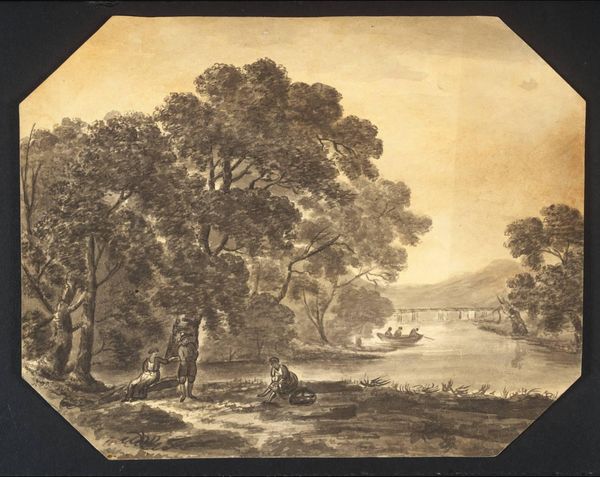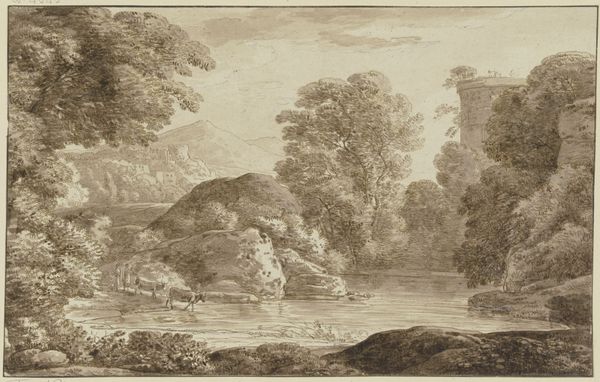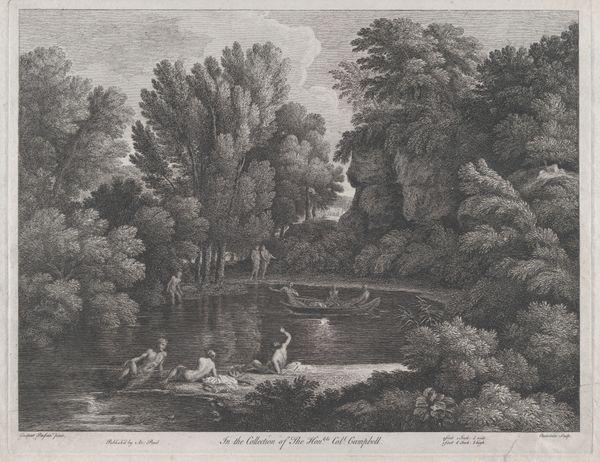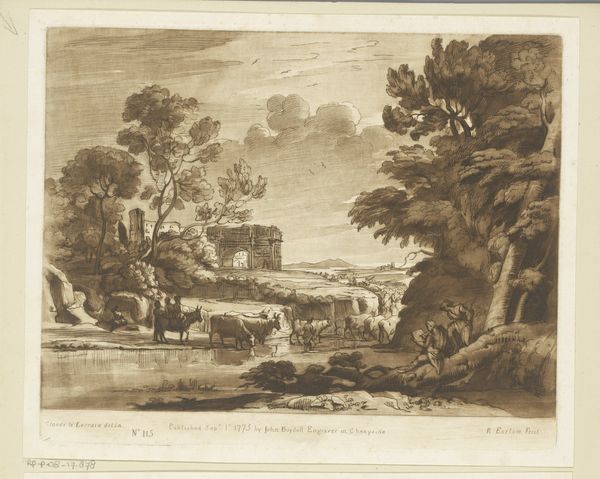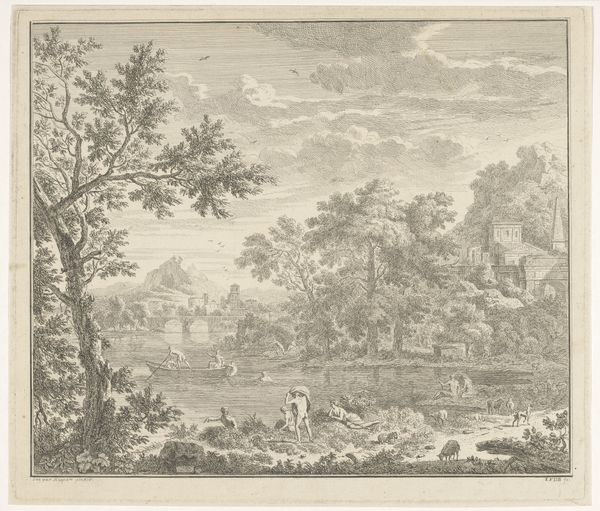
drawing, ink, architecture
#
drawing
#
neoclacissism
#
landscape
#
ink
#
german
#
romanticism
#
architecture
Copyright: Public Domain
Curator: Here we see "Heroic Landscape," a drawing in ink created circa 1825 to 1828 by Johann Christian Reinhart, now residing at the Städel Museum. What are your initial thoughts? Editor: It's beautiful, certainly! But there’s a deliberate, almost constructed feel to it. It evokes this sense of a cultivated memory, idealized, not quite raw. The browns and blues make me think of old photographs. Curator: Constructed is an excellent way to put it. Reinhart worked within Neoclassical and Romantic idioms, drawing inspiration from idealized Italian landscapes and the aesthetics of antiquity. The image speaks to a particular cultural memory: of humans in harmony with an ordered, almost architectural, nature. We are also facing the architectural representation. Editor: Right. It’s not just nature, but nature as stage. The little temple…or is it a tomb? Either way, it’s a backdrop, framing an imagined history. And who exactly are these figures? I’m getting a Roman vibe from their tunics and ox. How does this romanticism reflect the inequalities and power structures inherent in idealized views of the past? Is the heroism here a conscious comment about the exploitation often whitewashed from history? Curator: Intriguing! Let's consider how symbols convey ideas. These figures embody ideals of rural virtue—simplicity, connection to the land. But these very ideals have historically been used to justify societal hierarchies. We are transported to an ideal Arcadia, and yet is that idyllic scene a real state or more about its representation? Editor: Precisely! The ox-drawn wagon symbolizes labor, and their tunics recall a distant, noble past. This romanticizing element distracts, normalizing disparities as simply being part of a picturesque backdrop. If one begins to dismantle these loaded aesthetic constructions and traditions, we are left not only to reflect on these historical dynamics of class, race, and labor but how art can become an unintentional pawn that legitimizes social imbalance. Curator: Well said. It speaks to how deeply entrenched certain visual tropes become. "Heroic Landscape" doesn't just depict a scene, it recites an entire vocabulary of cultural meaning that can evolve—for better or for worse—through representation. Editor: So while I initially found its palette calming, considering the sociopolitical implications of its symbolism has revealed uncomfortable truths about idealized pasts and continuing inequalities. Curator: Absolutely. Thank you.
Comments
No comments
Be the first to comment and join the conversation on the ultimate creative platform.
